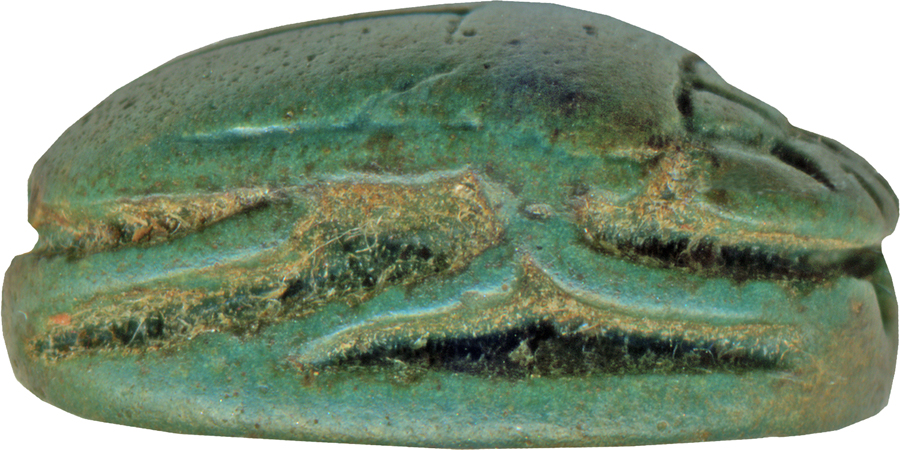Scarab with a Deity, Offering Table, and Tree
(Ancient Egypt and Nubia )
This steatite scarab has a flat underside with vertically arranged, sunk relief design representing a hawk-headed deity combined with an offering table and a tree. The back is high and is carved in a detailed, deeply incised design. The piece is simply made and the workmanship is good.
The scarab functioned as a provider-individualized amulet, and was originally mounted or threaded. The amulet should secure the necessary rituals for the god, and provide its owner with his divine protection. It is possible that the owner of the scarab was involved in the rituals, and had a priestly function.
The combination of a divine figure with an offering table does not belong to the standard repertoire.
Provenance
Provenance (from the French provenir, 'to come from/forth') is the chronology of the ownership, custody, or location of a historical object. Learn more about provenance at the Walters.
Henry Walters, Baltimore [date and mode of acquisition unknown]; Walters Art Museum, 1931, by bequest.
Geographies
Palestine
(Place of Origin)
Egypt (Place of Origin)
Measurements
H: 5/16 x W: 7/16 x L: 5/8 in. (0.8 x 1.1 x 1.6 cm)
Credit Line
Acquired by Henry Walters
Location in Museum
Not on view
Accession Number
In libraries, galleries, museums, and archives, an accession number is a unique identifier assigned to each object in the collection.
In libraries, galleries, museums, and archives, an accession number is a unique identifier assigned to each object in the collection.
42.63








